In our day-to-day life, we do a lot of things as a business person, employee, or even as a housewife or househusband. Oftentimes, we forget to do a few…
continue reading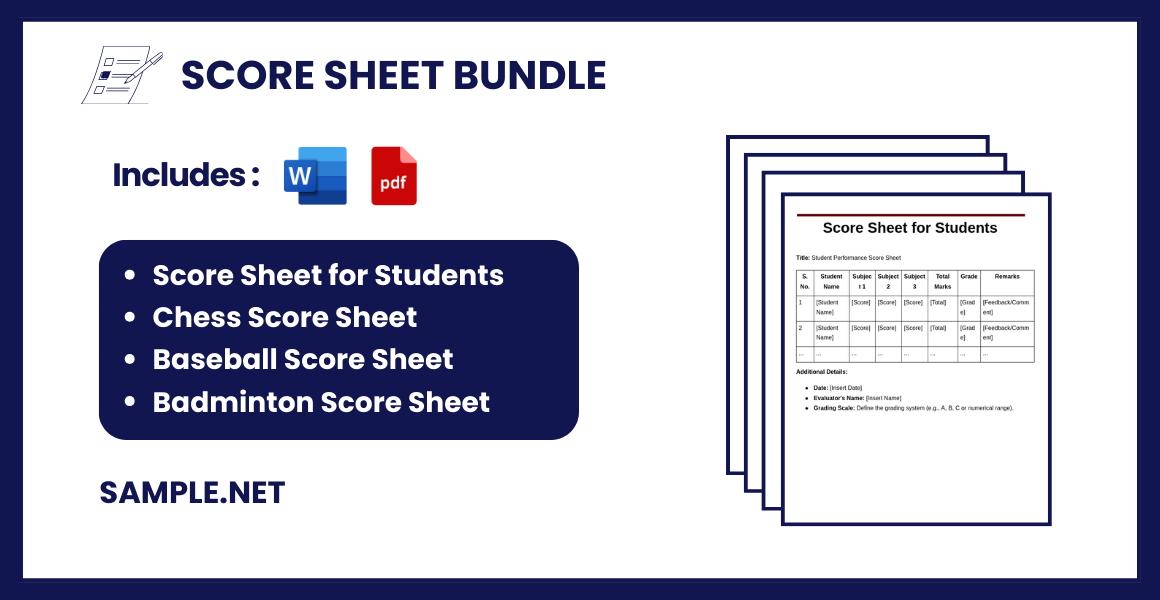
Score Sheet Format
Title: [Specify Event/Subject/Activity Name]
| S. No. | Name | Criteria 1 | Criteria 2 | Criteria 3 | Total Score | Remarks |
|---|---|---|---|---|---|---|
| 1 | [Participant Name] | [Score] | [Score] | [Score] | [Total] | [Feedback] |
| 2 | [Participant Name] | [Score] | [Score] | [Score] | [Total] | [Feedback] |
| 3 | [Participant Name] | [Score] | [Score] | [Score] | [Total] | [Feedback] |
| … | … | … | … | … | … | … |
Additional Details:
- Date of Evaluation: [Insert Date]
- Evaluator’s Name: [Insert Name]
- Scoring Criteria: [Define what each criterion represents and scoring range (e.g., 1-10 or A-F)]
- Remarks/Feedback: Provide constructive comments if applicable.
Score Sheet Samples
-
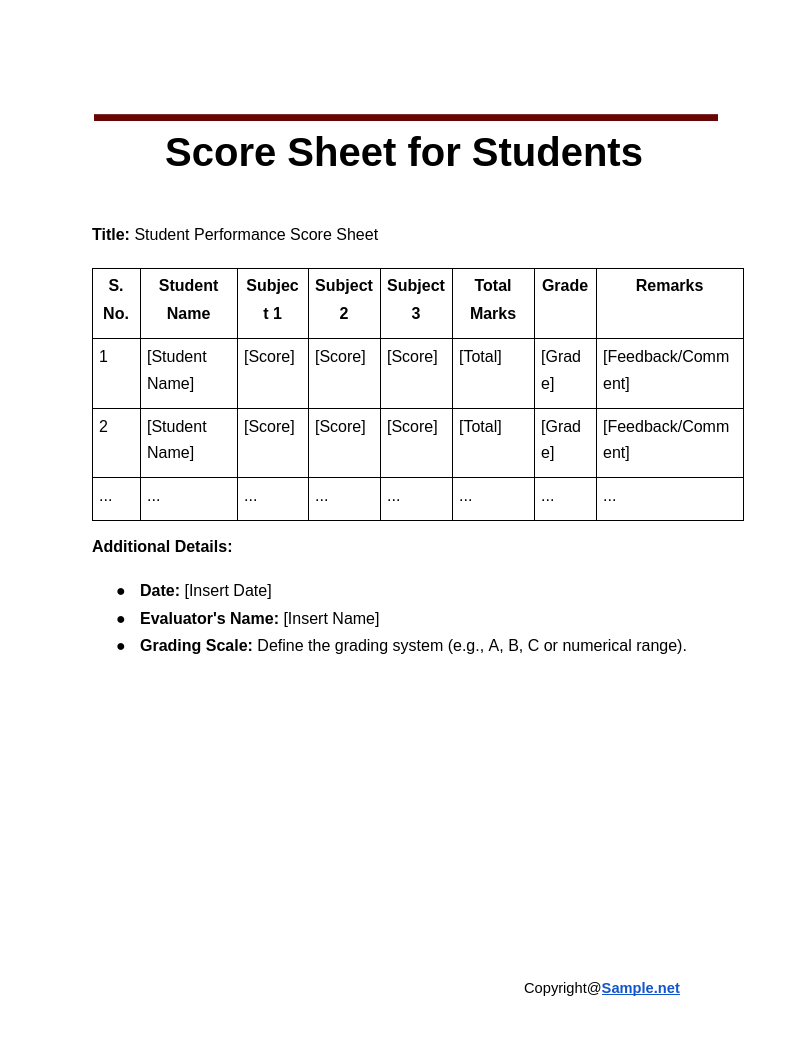
Score Sheet for Students
download now -
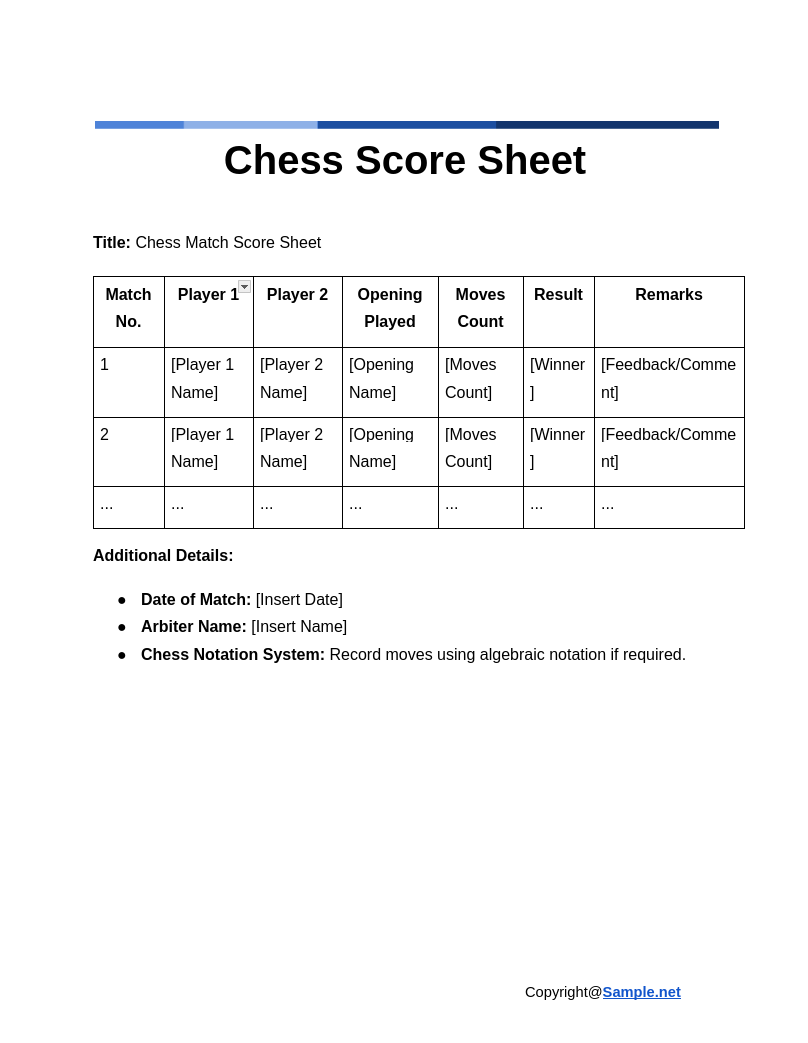
Chess Score Sheet
download now -
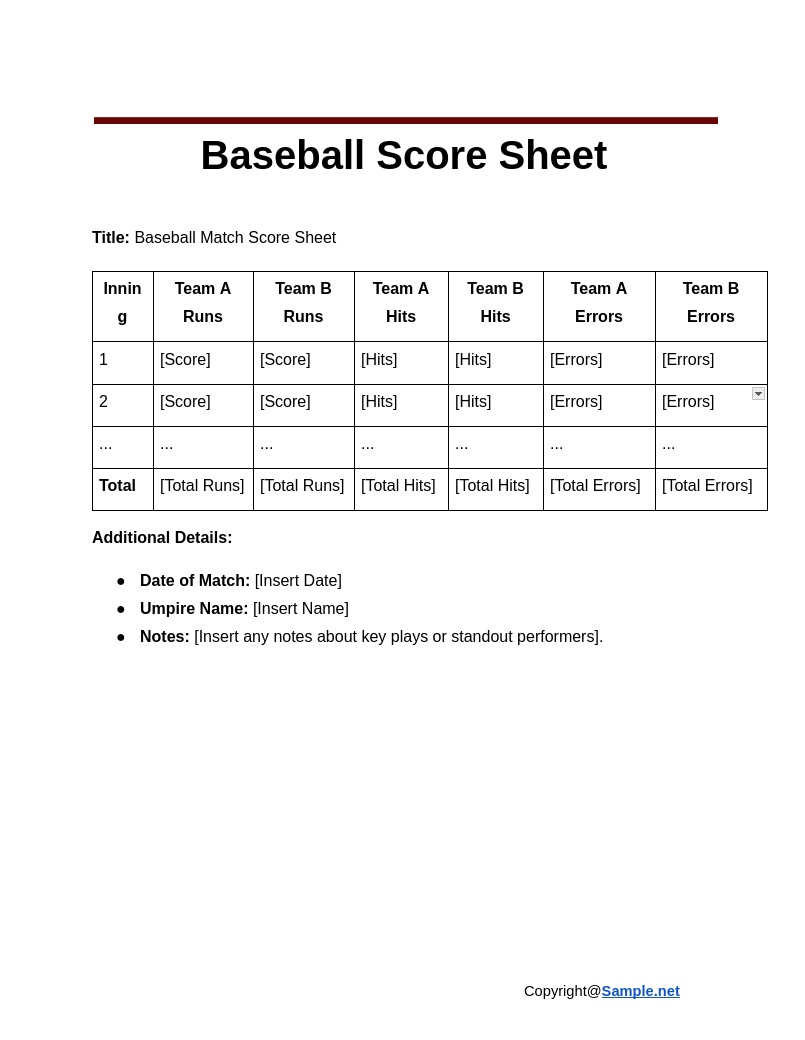
Baseball Score Sheet
download now -
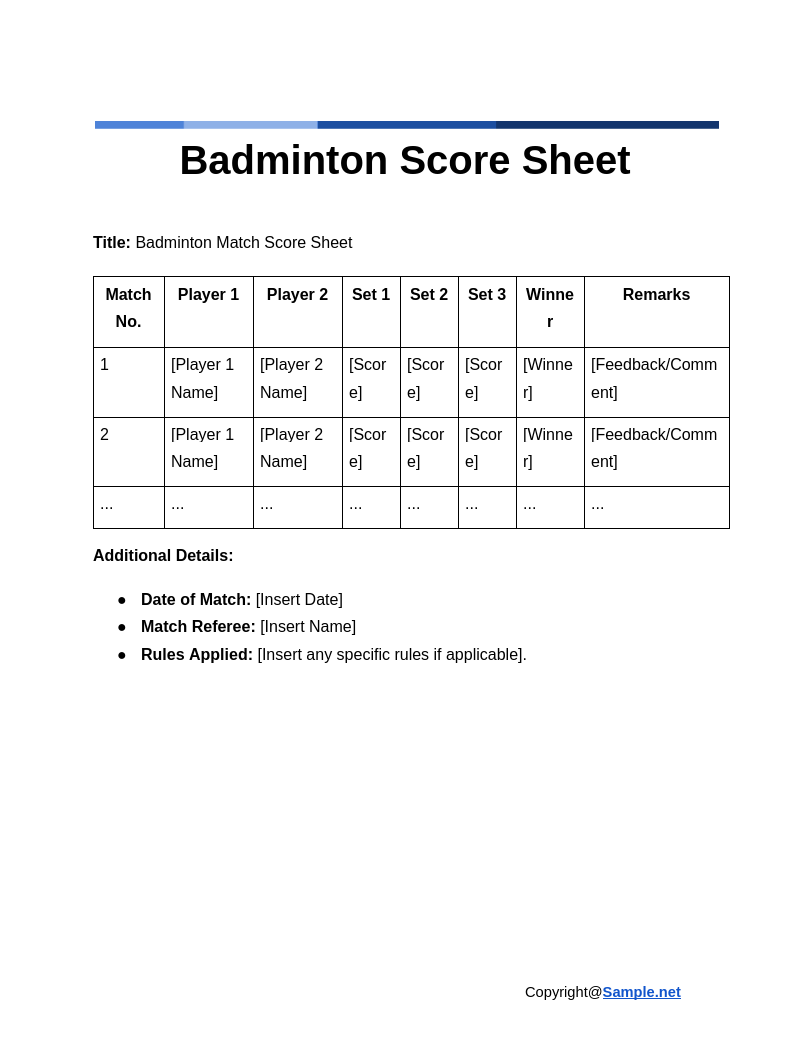
Badminton Score Sheet
download now -
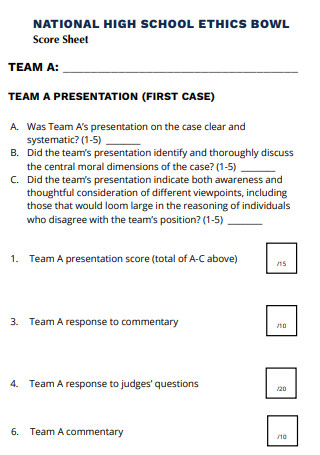
National High School Score Sheet
download now -
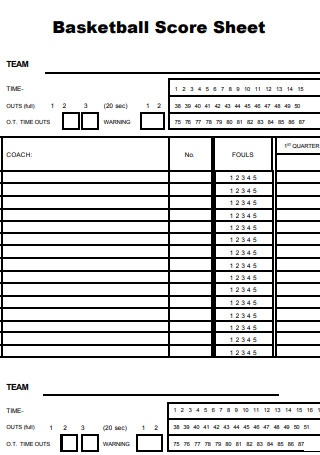
Basketball Score Sheet
download now -
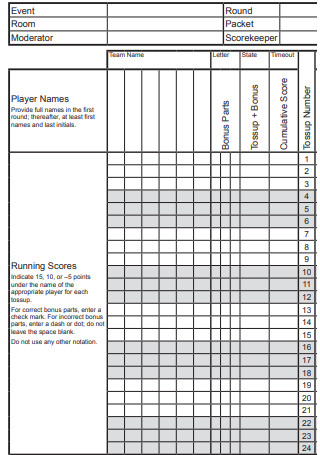
Sample Score Sheet
download now -

Beer Score Sheet
download now -
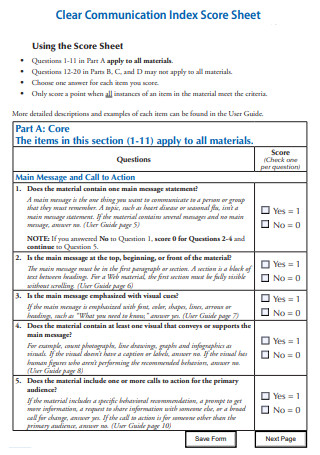
Clear Communication Index Score Sheet
download now -
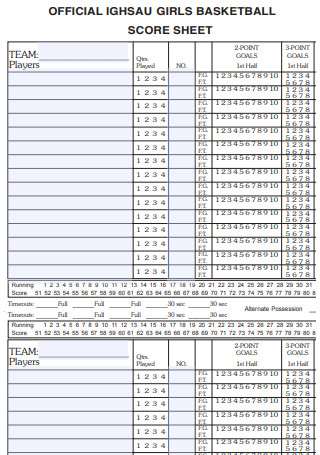
Girls Basketball Score Sheet
download now -
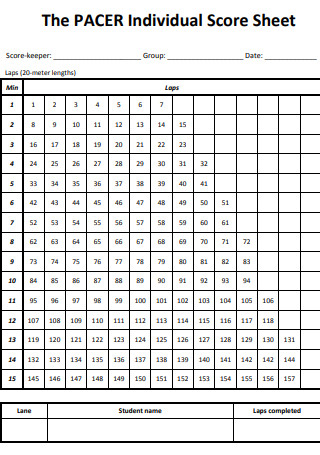
Individual Score Sheet
download now -

Prioritization Score Sheet
download now -

Volleyball Score Sheet
download now -
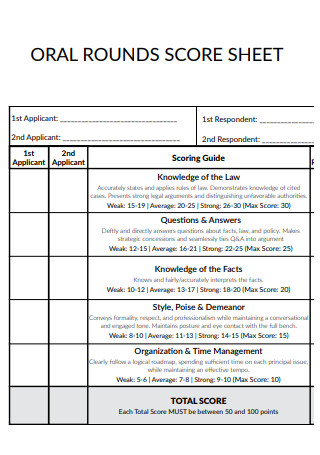
Oral Rounds Score Sheet
download now -
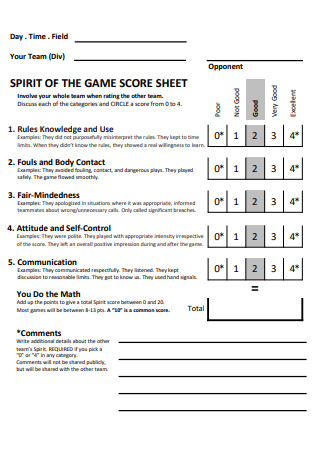
Spirit of Game Score Sheet
download now -
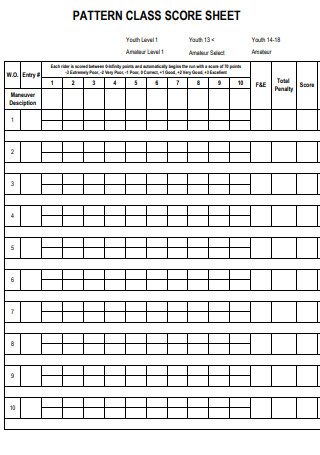
Pattern Class Score Sheet
download now -
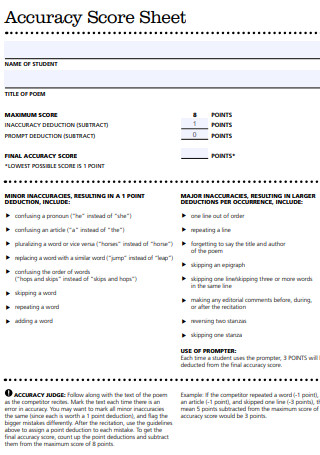
Accuracy Score Sheet
download now -

Trail Score Sheet
download now -
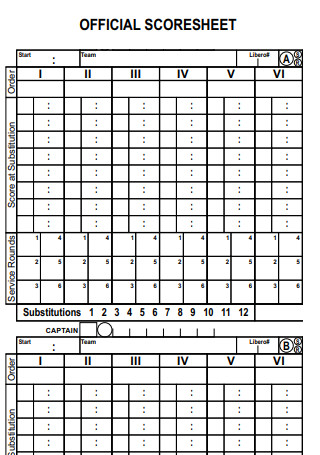
Official Score Sheet
download now -
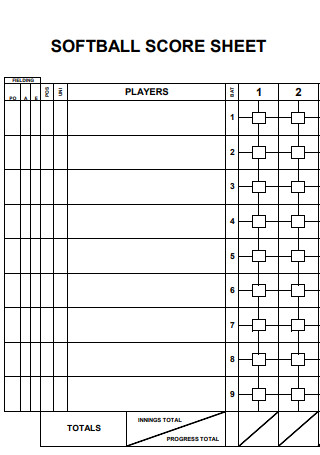
Softball Score Sheet
download now -
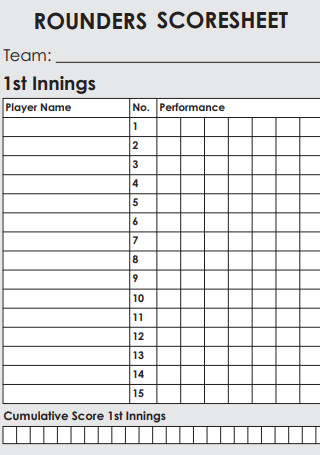
Rounders Score Sheet
download now -
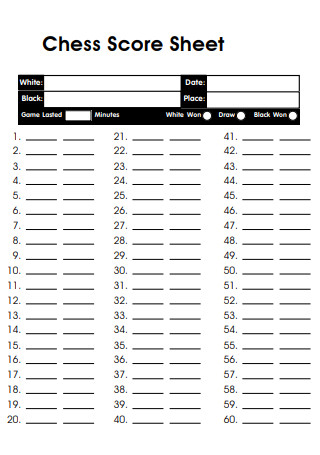
Chess Score Sheet
download now -
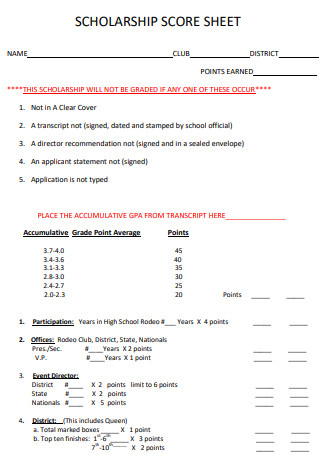
Scholarship Score Sheet
download now -
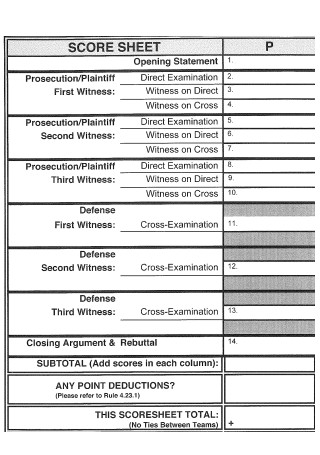
Performance Score Sheet
download now -
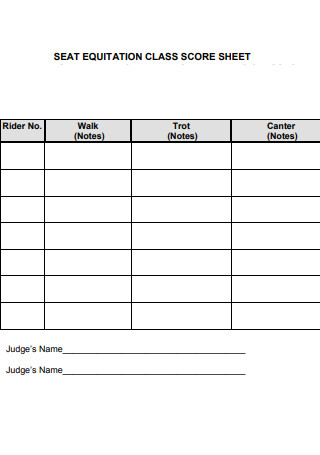
Equitation Score Sheet
download now -
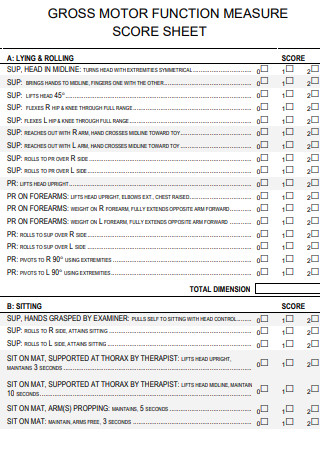
Gross Motor Function Score Sheet
download now -
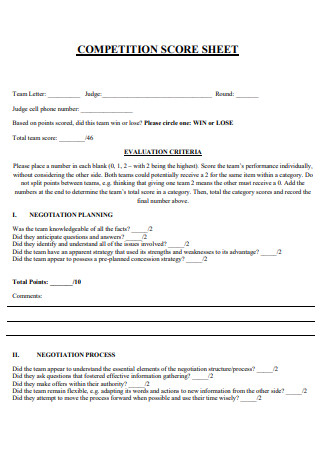
Competition Score Sheet
download now -
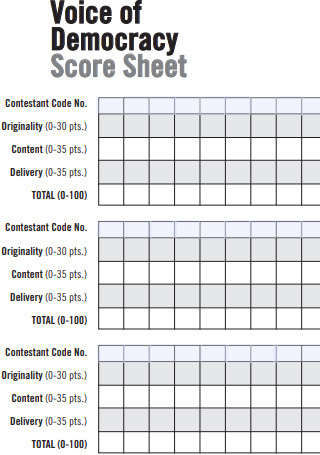
Democracy Score Sheet
download now -
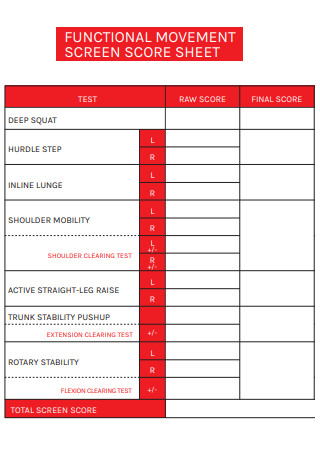
Functional Movement Screen Score Sheet
download now -
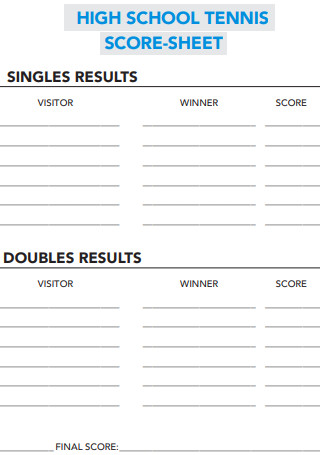
High School Tennis Score Sheet
download now -
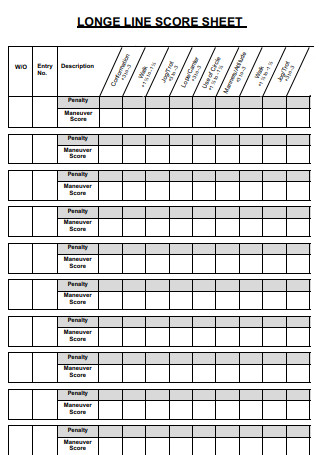
Longe Line Score Sheet
download now -

Design Judging Score Sheet
download now -
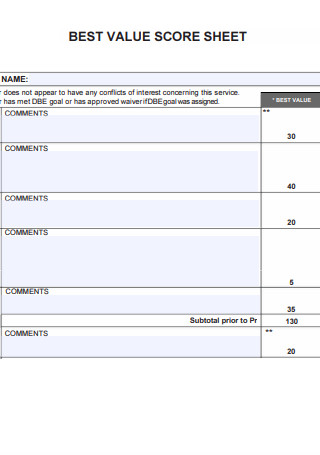
Best Value Score Sheet
download now -
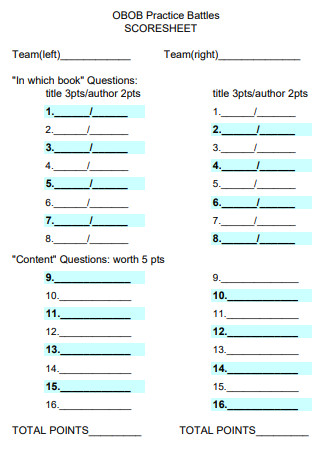
Practice Battles Score Sheet
download now -
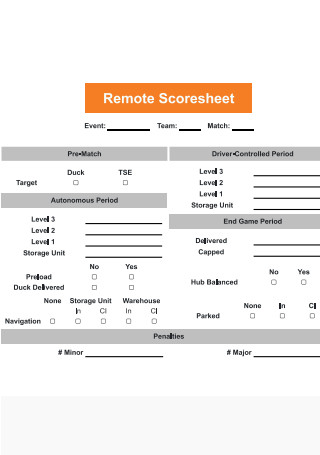
Remote Score Sheet
download now -
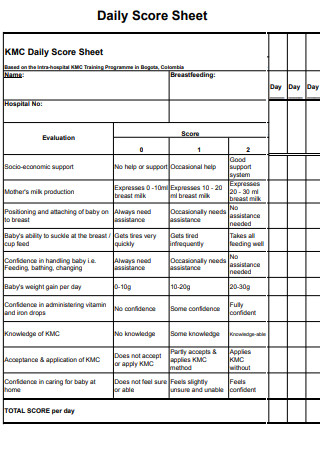
Daily Score Sheet
download now -
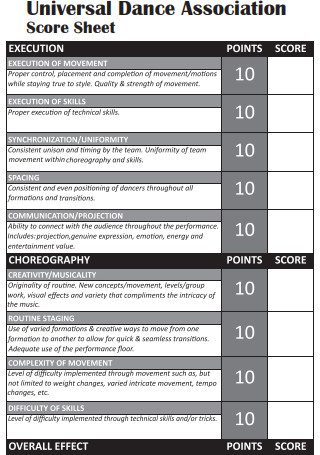
Universal Dance Association Score Sheet
download now -
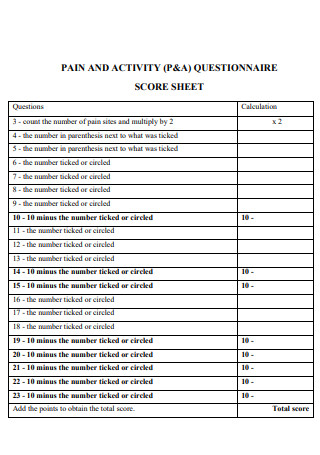
Pain and Activity Questionnaire Score Sheet
download now -
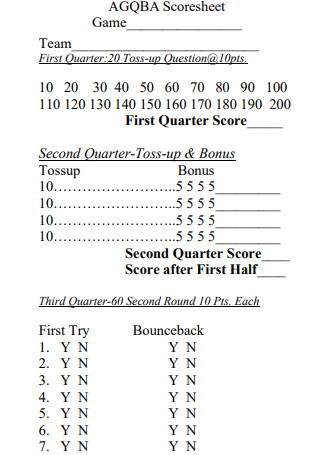
Basic Score Sheet
download now -

Judge Score Sheet
download now -
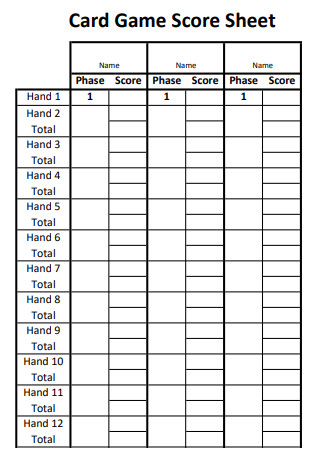
Card Game Score Sheet
download now -

Pasture Condition Score Sheet
download now -
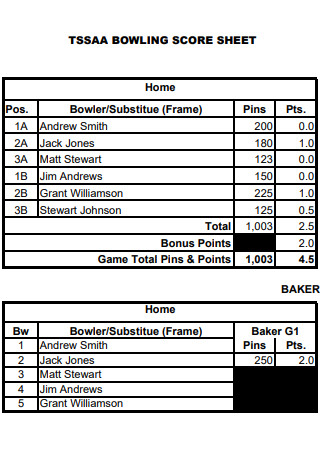
Bowling Score Sheet
download now -
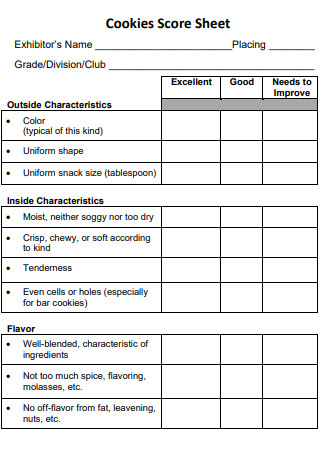
Cookies Score Sheet
download now -

Demonstration Score Sheet
download now -
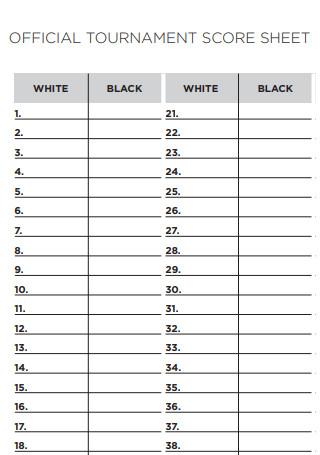
Official Tournament Score Sheet
download now -

Sensory Score Sheet
download now -
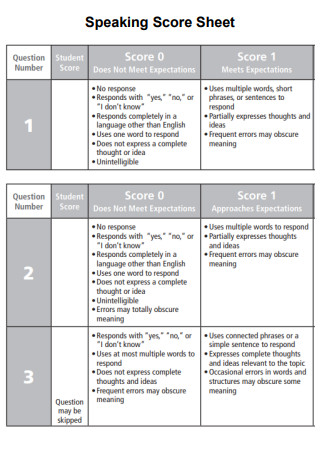
Speaking Score Sheet
download now -
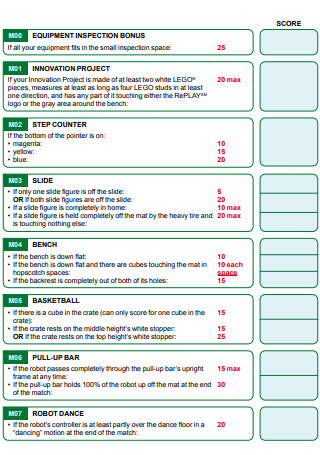
Score Sheet Example
download now -

Dual Meet Score Sheet
download now -
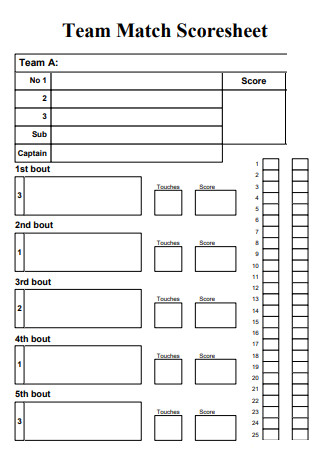
Team Match Score Sheet
download now -
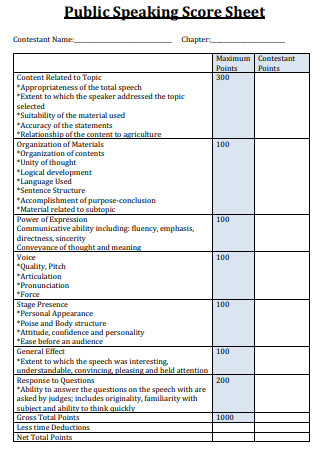
Public Speaking Score Sheet
download now -

Game Contestant Score Sheet
download now -

Hand And Foot Score Sheet
download now -

Fire Operation Fitness Challenge Score Sheet
download now
What is a Score Sheet?
A score sheet is an essential document used to record and track performance, achievements, or results in various activities. Whether in sports, academics, or business assessments, it provides a structured format for capturing data systematically. Score sheets are designed to ensure transparency and accuracy, enabling fair evaluations and decision-making processes. You can also see more on Data Sheet.
Benefits of a Balanced Score Sheet
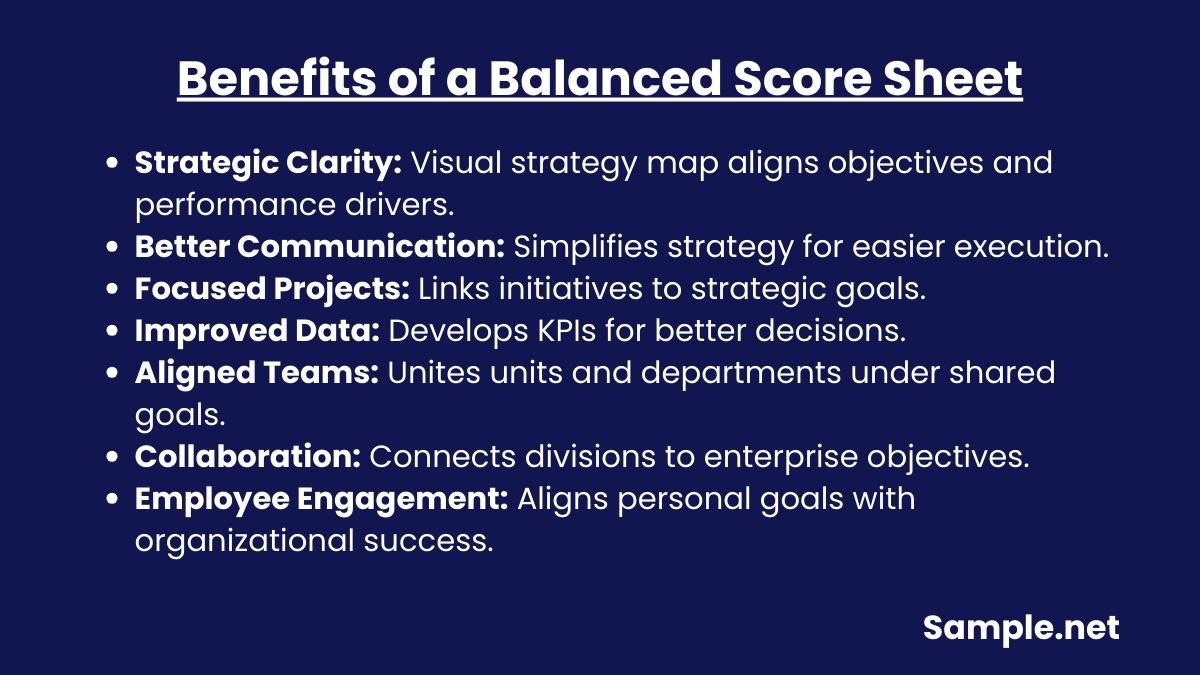
According to research, organizations that employ a Balanced Score sheet approach outperform those with a formal process to strategic performance management. You can also see more on Data Collection Sheets. Here are some of its advantages:
Tips in Having an Effective Score Sheet
1. Recognize the objective.
Before you begin creating a score sheet, it is critical to understand its purpose. That is because a score sheet for tests is different from a score sheet for quizzes, just as a score sheet for a basketball game is different than a score sheet for a figure skating competition. Before producing a score sheet, it helps to understand the test, sporting event, or competition.
2. Maintain accuracy.
When it comes to encoding numbers in a sheet, you must input these numbers precisely; this also means that you must be honest with your scorekeeping. Indeed, the integrity and correctness with which you enter the score are critical to the effectiveness of the score sheet. Additionally, the sheet must have no erroneous records or bogus scores, whether done inadvertently or purposely. According to research, accuracy refers to ensuring that information is correct and error-free. Accuracy of information is critical since it may directly impact people’s lives, such as medical records at hospitals; hence the data must be correct. Additionally, erroneous information may accumulate as a result of a typographical error.
3. Include all necessary data.
This is critical for athletic events now. A well-designed sheet should include the date, the event, the names of the persons or teams who performed, the scores, and the scoring key and criteria. At its most basic level, your score sheet should be extremely well-organized. This means that you must have the correct information and maintain it in the right location. Maintaining an ordered score sheet can assist you in entering the digits correctly and rapidly, eliminating issues such as incorrectly encoding scores.
4. Maintain a simple design.
A score sheet is not a painting canvas. As this is an official document, it does not require any flashy graphics or illustrations. Maintain a simple design similar to that of a data sheet. Bear in mind that you are not the only person who will read the sheet. Students, teaching members, judges, and coaches, among others, will use the material for reference. That is why it is critical to design it clearly and consistently so that others easily understand it. You can also see more on Product Fact Sheet.
How to Create a Score Sheet
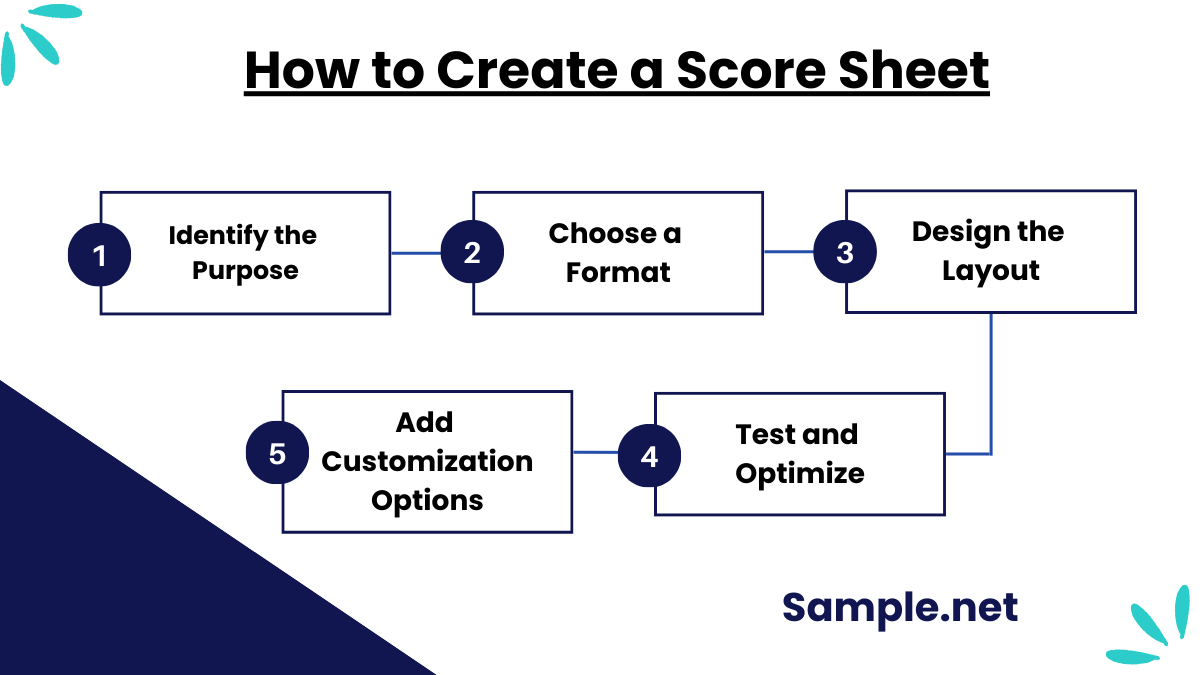
Step 1: Identify the Purpose
Determine the context where the score sheet will be used. For example, in sports, it must include fields for teams, players, and scores. For academic purposes, columns like student names, grades, and remarks might be necessary. Understanding the purpose ensures the design is practical and meets the required objectives.
Step 2: Choose a Format
Decide whether the score sheet will be paper-based or digital. Tools like Microsoft Excel, Google Sheets, or specialized apps can be used for digital formats. A paper-based sheet should have a clear, printed grid layout. Ensure the format chosen aligns with the ease of use and the scenario in which it will be utilized. You can also see more on Run sheets.
Step 3: Design the Layout
Create sections for relevant data. For example, include headings like “Name,” “Date,” “Score,” and “Comments” for an academic score sheet. Add formulas for calculations in digital formats to enhance efficiency. The layout should be simple and user-friendly to avoid confusion during data entry.
Step 4: Add Customization Options
Incorporate fields for notes, signatures, or specific parameters unique to the context. For instance, sports score sheets might need spaces for fouls, timeouts, or penalties. Tailoring these options ensures the sheet can capture comprehensive information. You can also see more on Tracking Sheet.
Step 5: Test and Optimize
Before finalizing, test the score sheet with sample data. Ensure that calculations (if any) work correctly, fields capture all necessary data, and the design is intuitive. Based on feedback, make adjustments to enhance usability and accuracy.
FAQs
What is the distinction between a scoresheet and a scorecard?
There is no distinction between a score sheet and a scorecard. Indeed, the two are frequently used interchangeably. On the other hand, a score sheet is more commonly used in a classroom or school setting, whereas a scorecard is more regularly used in sports and other events. You can also see more on Answer Sheet.
What is an effective rubric?
A decent rubric should include a list of particular evaluation criteria. These should be one-dimensional so that students and raters understand what is expected. The higher the level of specificity, the easier it is for raters to provide a score and for students to verify and comprehend their scores. Effective rubrics demonstrate to students how they can determine to what extent their performance meets each important criterion. When used, they can also explain to students what their next steps should be to improve the quality of their work.
What does rubric grading entail?
A rubric is a grading guide that specifies the criteria for evaluating student work on a conversation, a paper, a performance, a product, a show-the-work challenge, a portfolio, a presentation, or an essay topic. While kids are studying, rubrics educate them about the requirements. You can also see more on Sign-Up Sheets.
In business, what is a scorecard?
A performance scorecard is a graphical illustration of an entity’s progress through time toward a given objective or set of goals, such as an enterprise, an individual, or a business unit. Scorecards are built on the principles of targets and key performance indicators (KPIs).
How can businesses benefit from score sheets?
Businesses use score sheets to evaluate employee performance, project outcomes, or sales metrics. They provide structured data that supports informed decision-making and progress tracking.
What are the advantages of using templates for score sheets?
Templates save time by offering pre-designed layouts. They ensure consistency, reduce setup errors, and allow for quick adjustments to suit various scenarios like competitions or assessments. You can also see more on Inventory Sheets.

